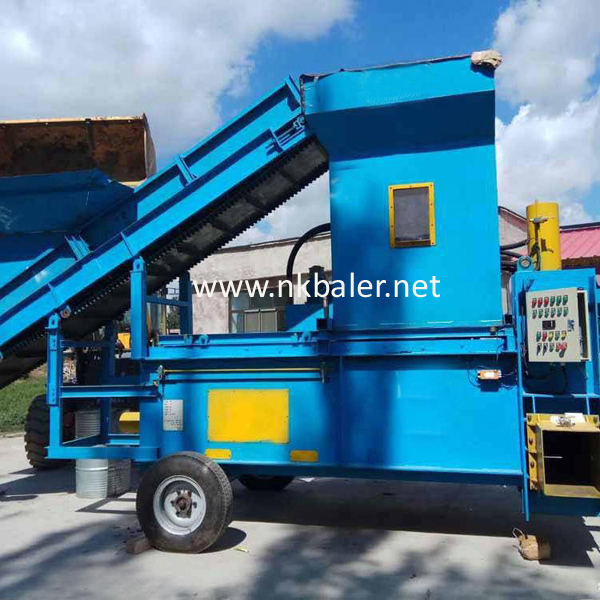Straw baler packaging categories mainly include waste glass bottles,
waste paper, waste fabrics, waste plastic film,
waste foam plastic, and wood. Among them, waste cotton and hemp textile materials can be made into high-quality paper; wood can be reused according to its quality. Even without recycling, due to the basic composition of cellulose, it is easy to rot, decompose, and be absorbed by the soil, leaving no residues and not causing harm to the environment. However, other packaging waste generally poses a threat to the environment.The inspection of
straw balers involves planned preventative checks, which, besides human sensory perception, also follow an inspection card for execution. This inspection is also known as regular spot checking. Straw balers feature excellent rigidity and stability, attractive design, convenient operation and maintenance, safety and energy efficiency, and low investment cost for basic equipment projects. When conducting a thorough inspection of straw baler equipment, attention should be paid to the oil cylinder and electrical components, as the quality of the equipment directly relates to its material and grade.Generally, high-quality equipment is not only flexible, fast, and efficient but also durable and resistant to wear. It feels good to the touch and has a long lifespan, which is one of the methods to judge its quality. Furthermore, technology is key, as technological innovation significantly impacts the entire operating system, potentially accelerating product operation efficiency or enabling automatic packaging on its own.The regular maintenance work of straw balers should establish a quota for material consumption and assess based on this quota. The maintenance of straw balers should be included in the assessment content of the worker contract responsibility system. Maintenance of straw balers is the foundational work of equipment maintenance and must be standardized.What are the advantages of straw balers?Customers can choose the model that suits their actual situation, as various types of hydraulic balers coexist in the market today. Due to their obvious advantages, trust in straw balers will increasingly occupy a larger mainstream market.Straw baler machinery is constantly being updated with advancing technology. For example, straw balers have evolved from manual compression at the beginning, to semi-automatic balers, and then to
fully automatic computer-controlled balers with automatic strapping in recent years, quickly becoming mainstream in the market. So, what are the advantages of straw balers?As they are automated, they reduce many disadvantages brought by manual operation. Compared to manual and semi-automatic balers,
fully automatic hydraulic balers significantly improve production efficiency and also reduce labor intensity for workers.

They maximize the compression of materials, resulting in denser bales produced by fully automatic hydraulic balers, saving transportation costs—a benefit deeply appreciated by customers who have used both generations of equipment.Due to the use of a hydraulic system, straw balers produce more uniformly shaped packages compared to traditional manual balers, enhancing our company's technical strength and corporate image. Therefore, during loading, unloading, and transportation processes, straw balers are less likely to experience loosening because the waste packed by straw balers has a high density and does not pollute the environment.Maintenance work for straw balers should regularly inspect, clean, lubricate key components, timely replace worn parts, and adhere to operational standards to extend the equipment's lifespan.


